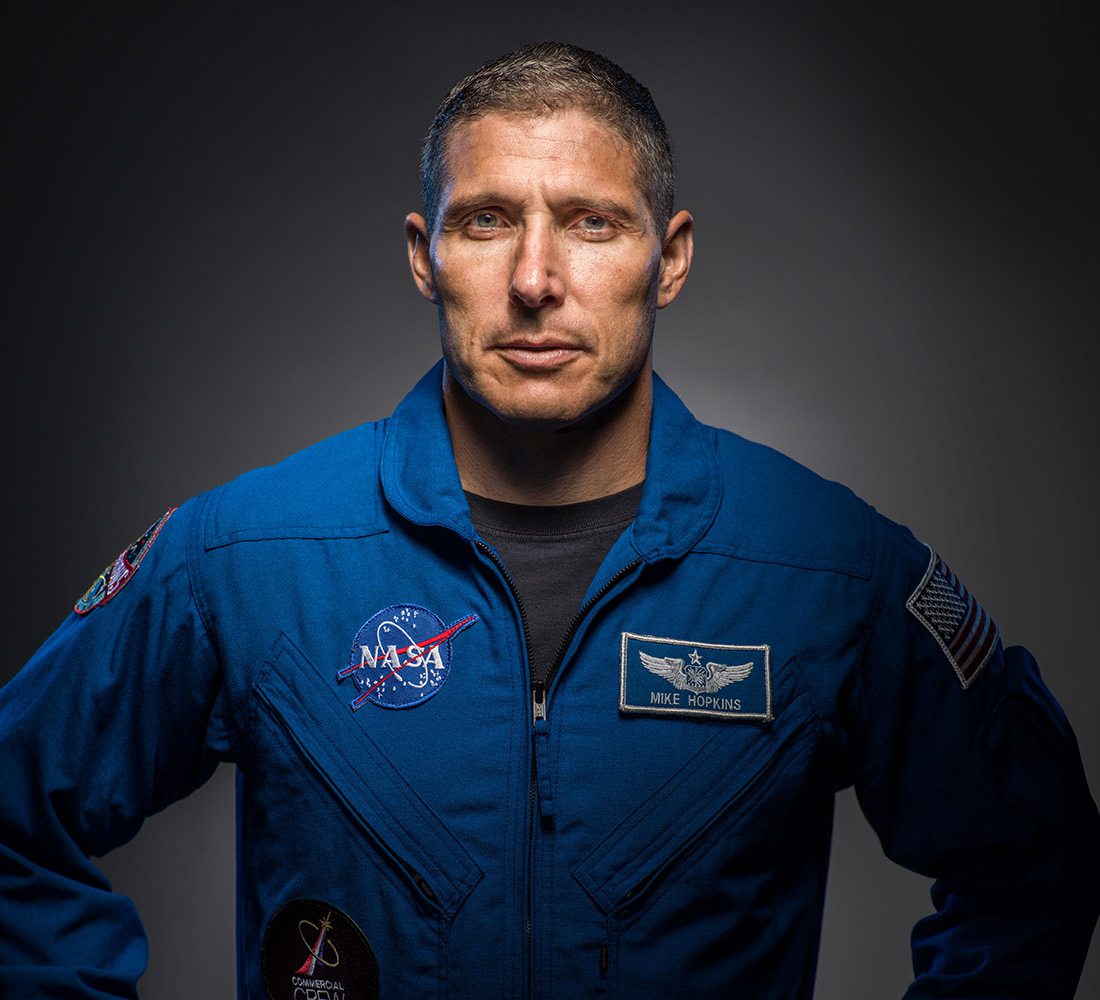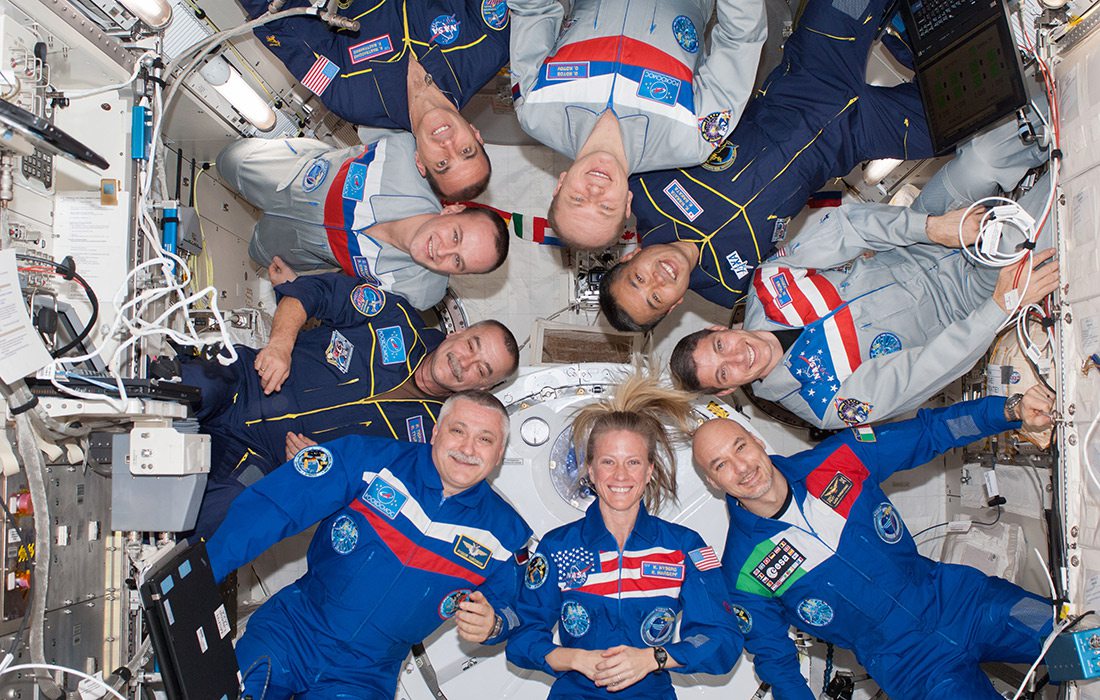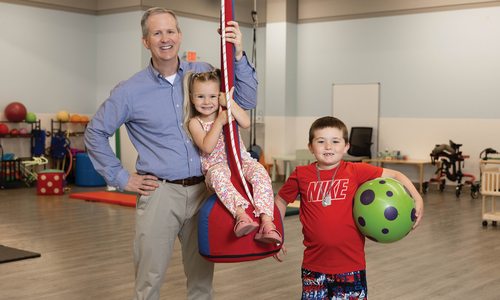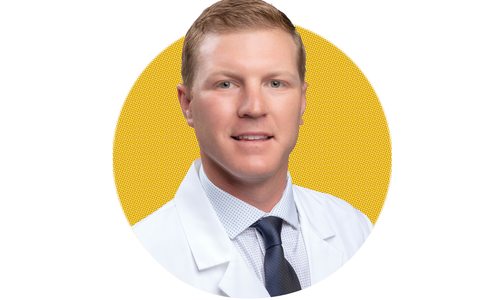Profiles
Missouri Native Mike Hopkins Prepares to Blast into Space for a Second Time
Born in Lebanon and raised in Richland, Mike Hopkins comes from humble beginnings. Where he’s been—and with the return of space flight to the United States, where he’s headed—is quite literally out of this world.
By Evan Greenberg
Feb 2019

All the blood rushes to your head the second gravity fails you. The turn upside down is not really a turn so much as acquiescing to an erratic tide. You either have or you haven’t gone to space, and most of us haven’t. That’s why Mike Hopkins is struggling to explain to me exactly what it’s like. It’s different for every astronaut, too, so how is it even possible to summarize these sensations? Couple that with the emotion that came with a dream realized, one that took Hopkins across the world and saw three failed NASA applications before this moment, and you’d think the totality of it all becomes a bit much. And yes, Hopkins is often in awe of the sheer scale of all the cogs and screws that work together to make space travel happen. But he’s also remarkably self-effacing about something that captures the collective imagination. “It just happens to be that I go into space,” he says. When you have as many people willing to brag and boast and testify to how great you are, maybe bashfulness and deflection become default settings. Even for someone like Hopkins, who planned virtually his whole life around getting into the position he currently sits—NASA astronaut and a colonel in the U.S. Air Force with one trip to space under his belt and another on the way—so many things have to go right. And they have.
Every decision Hopkins, 50, made since high school— attending college at the University of Illinois, earning a Masters degree at Stanford University, studying political science in Italy and serving under the Vice Chairman of the Joint Chiefs of Staff—was all in service of his goal. It took him four tries to get accepted into NASA’s astronaut class. In 2013, Hopkins launched from Kazakhstan to the International Space Station, where he conducted two spacewalks and took in a view very few have seen. And he’s about to do it again. This time, if all goes according to plan, it will be on a commercial spacecraft, SpaceX’s Crew Dragon, signifying a return of space flight launching from the United States. A lot of things have to happen before Hopkins travels back to the International Space Station, including unmanned and manned test flights beforehand. He anticipates that he’ll be back in space later this year or in early 2020. If you talk to anyone who knows Hopkins, anyone who’s ever come into his orbit, you’ll get the same response: Of course he’s going back.

Farm Life
Mike Hopkins grew up on a farm in Richland, Missouri with older brother, Alan, and older sister, Lorene. Farm life was what you might imagine it to be: hard work, baling hay and tending to large swaths of land that needed to be maintained as a matter of livelihood. Hopkins fed the hogs and did whatever else was required of a seven-day-a-week operation. Alan and Mike were best friends growing up, running around and playing in the creeks around their home. Their father, Ogle, once a pilot himself in the Marines, had the same disarming smile as Mike. Mike grew up with flying memorabilia around the house; his uncle Dale was in the Air Force and he’d overhear conversations about the flying the two brothers had done. Ogle was a disciplinarian, making sure that his kids never felt that they were at a disadvantage and instilling in them that there was no substitute for hard work. Mike excelled at everything he did, starting at quarterback from pee-wee football into high school at School of the Osage, where he was also a state champion pole vaulter.
Hopkins was in high school during the early days of the space shuttle program, and he’d watch the launches from school. He still remembers where he was when the Challenger exploded—it was a unifying moment that cemented his dream. “I think at that time, I can remember thinking that despite that tragedy, [being an astronaut] was still something that I’d like to do,” Hopkins says. “Out of tragedy, it solidified my desire.”

Renaissance Man on Campus
Perhaps the two most interesting times to observe a person are in the nascent stages of adulthood and when they are reflecting on a life well-lived. When Hopkins entered the University of Illinois, he was firmly coming into his own. The dream to go to space was alive but not yet realized, and the steps needed to get to it were about to take shape. Hopkins joined Pi Kappa Alpha fraternity and met his future wife, Julie, a member on the dance team. They became acquainted at a fraternity event on a night when Hopkins had decided to put down the books. Julie’s sister was the fraternity’s house sweetheart and introduced the two of them. They were friends for a while before they got together, but others insist that it was meant to be.
“He’s the whole package. He’s got the look, the brains, the brawn, the disposition, the work ethic. Mike’s [smile] jumps off the page-you kind of feel all the gravitas.”— David Sulaski
He joined Air Force ROTC and walked on the Illinois football team, establishing a daily schedule that to most would seem unmanageable but for him flowed seamlessly. Hopkins was revered on campus, someone who commanded the utmost respect of those around him. “He was not like the rest of us, but we all wanted to be a little more like him,” says David Sulaski, who roomed with Hopkins at their fraternity house during Hopkins’ first two years in school. “He’s the whole package. He’s got the look, the brains, the brawn, the disposition, the work ethic. Mike’s [smile] jumps off the page—you kind of feel all the gravitas.”
While the rest of his fraternity brothers were out partying, Hopkins would come home around the same time with a book bag in hand. He was going to make the most of each day’s 24 hours, going from class to football practice to studying and then waking up to do it all over again. As a walk-on at Illinois, he wasn’t initially on scholarship. But his work ethic and ability to do exactly what was asked of him was uncanny and earned him one his last two years. By his senior year, he was a starter and team captain. Steve Bernstein, Hopkins’ position coach at Illinois, remembers often seeing him an hour before the weight room opened. “I’m definitely a person that likes to kind of have a plan and a schedule and tries to march down that,” Hopkins says. “Even when I have days off, I usually make a list of ‘Here’s the things I’m going to do today,’ and try to check off the list.”

Taking Flight
After graduating, Hopkins went into the Air Force per his commitment to ROTC, understanding that it would take time before he had a shot at becoming an astronaut. But he put his active duty on hold when he was admitted to Stanford University to get his Masters in aerospace engineering. Once he got that degree, he became a flight test engineer for several years. He thought his resume might earn him a chance with NASA, but didn’t even get an interview. In 2003, he went to study political science in Parma, Italy—a risky decision he thought might harm his chances of becoming an astronaut. From there, he worked at the Pentagon and then as a special assistant to the Vice Chairman of the Joint Chiefs of Staff.
Finally, in 2009, he was selected to NASA’s 20th astronaut class, a nearly life-long dream realized. Four years later, he launched into space.
How do you describe an experience that is entirely your own, that can’t be put into a frame of reference for anyone who hasn’t lived it? In Hopkins’ case, there’s plenty of awe at those he works with and the experiences he’s had. But those in the business world or the military or in technical fields are doing things just as interesting as he is, he says. This isn’t Hopkins being glib so much as a summation of his aw-shucks, eternally nice demeanor. As for being in space, the Earth is dominant as light and dark dance in the backdrop, appearing and disappearing. That floating sensation is ever-present; the fact that you’re in space is always front and center.
“We all see these incredible pictures and videos from outer space of the Earth but until you’re actually there looking down at it—it just puts it in a different light when you’re experiencing it firsthand versus through a video or something like that,” Hopkins says. “It’s very surreal. It’s something that, even after you get there, you’re kind of constantly pinching yourself saying, ‘Is this really happening, is this true?’”

Reaching for the Stars
What did you want to be when you grew up? Maybe you wanted to wield a bat and be baseball’s next great slugger, or conduct experiments with a beaker and lab equipment. Or maybe you wanted to be an astronaut and explore the great beyond, to put on a heavy suit and look down at the Earth below. When kids express these not-yet-corrupted-by-the-real-world dreams, the grown-ups around them can be quick to temper their expectations. Very few people make it to the major leagues, they’ll say. Becoming a scientist takes years and years of schooling—and space?—space is really far away, and those odds are understandably astronomical. Mike Hopkins had one of these dreams. Any odds or naysaying that might have been thrown at him were just considered a challenge. Hopkins lives inside a John Mellencamp song, the All-American Midwestern football star-turned-astronaut who married a member of the Illinois dance team and who charms anyone he comes in contact with. There’s nothing and nowhere he can’t and won’t conquer, and once he has, well, as it turns out, he’s the type of person who won’t hesitate to do it again.
“Knowing that at the end of all this you’re going to have the opportunity to sit on top of a rocket and launch into space with your crew and execute NASA and the United States’ human space flight program, having that goal out there is certainly something that motivates you,” Hopkins says. “There’s an electricity in the air at Kennedy Space Center when there’s a launch going on that is hard to describe.”











